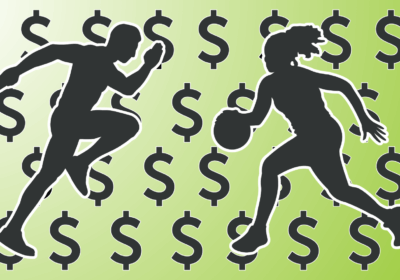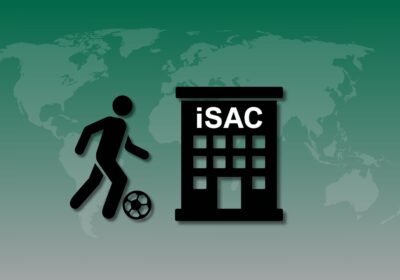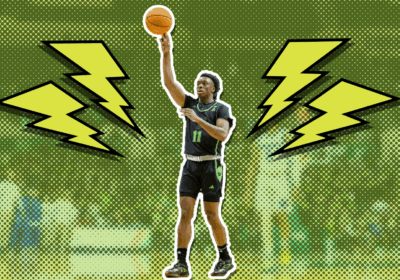Spike in targeting ejections is a cause for concern in college football

Coaches around the nation have responded to the uptick in targeting penalties by telling their players to avoid tackling high.
PHOTO PROVIDED BY MATTHEW PASKERT/FSVIEW
It was on a routine pursuit of the quarterback that the controversial targeting rule made its rounds through college football. This time, it gut checked USF and left the Bulls without their top linebacker in arguably the biggest game of the season.
Early in the third quarter of the Bulls’ matchup with No. 10 Florida State, redshirt sophomore Auggie Sanchez led high with his shoulder on a tackle of Seminoles quarterback Everett Golson. Sanchez was ejected from the game and forced to sit out the first half of the following game at Maryland.
With an emphasis on player safety, the NCAA and its referees are making these calls more frequently than in past years amid the ongoing battle with concussions and other head and neck injuries.
So far, the rule has come with a fairly large gray area.
Sanchez’s was not the first — or the last — of the targeting calls at Florida State. In the second quarter, FSU safety Lamarcus Brutus was ejected for a crushing blow on special teams while Seminoles safety Nate Andrews’ targeting call on the final play of the game — an excruciating hit to the upper body that caused USF tight end Elkanah Dillon to miss the following game — was reversed on a lengthy review.
Although the NCAA reiterates that referees will err on the side of caution when enforcing the rule, it ultimately comes down to a split-second judgment call.
Through the first two weeks of the season, 19 players were ejected for targeting — five more than at the same point a season ago. Another 10 succumbed to the same fate in Week 3.
Targeting has been running rampant through college football since the rule was implemented in 2008. But rule changes in 2013 now allow officials to eject players and have escalated the effect of these calls on the game.
As for coaches, they continue to walk along a tight rope, not wanting to do or say anything that may be construed as critical of the NCAA.
Following his team’s 34-14 loss to the Seminoles, USF coach Willie Taggart put it ever so elegantly: “How did Marshawn Lynch say it? I’m here so I won’t get fined.”
Though it is smart to not criticize the almighty NCAA, without coaches taking charge, changes to the rule will long be an afterthought.
Instead, coaches are putting an emphasis on staying low while tackling in order to help their players avoid being flagged. Players like USF’s Nate Godwin have been forced to alter their game to adjust to the mold of the new rules.
“It’s very difficult,” the junior defensive back said. “As you see, there were a lot of ejections across the nation so far. It’s just something because as kids, we’re taught to just run and hit. … All of a sudden, they’ve changed the rule and you have to change the way you play the game and approach every tackle.”
In USF’s game against Maryland, Terrapins running back Wes Brown became the first offensive player to be ejected this season after laying a helmet-to-helmet hit on what was deemed a “defenseless” Deatrick Nichols, who was sliding after intercepting a pass.
Brown’s absence in the second half put Maryland at a significant disadvantage in the run game, as the Terps had to turn to a true freshman to fill the void.
“You go over all those things with them, but kids get out there in the heat of the moment and play the game and sometimes something happens,” Maryland coach Randy Edsall said after the game. “Wes is a great kid. He wasn’t trying to hurt anybody. His technique was just very bad.”
These ejections aren’t just affecting the bottom feeders of Division I-A football. Powerhouses like Georgia, LSU, Wisconsin and Mississippi — all top-25 teams — have had starters ejected for targeting, as well.
In the final quarter of LSU’s 45-21 rout of then-ranked Auburn on Sept. 19, linebacker Deion Jones was flagged for targeting for his hit on Auburn quarterback Jeremy Johnson, which forced him to miss the first half of LSU’s game against Syracuse last Saturday.
“We talk about this,” LSU coach Les Miles told reporters following the game. “It’s not like we leave it un-coached. We coach that at the start of the season. We coach that in several meetings and he’s got to get it right. And he will.
“He’s a quality man and a good teammate, so it will be important to him, I promise.”
Most of the flags are not for malicious intent, but for poor technique — a problem USF’s first-year defensive coordinator Tom Allen is trying to cure.
“Since Coach Allen got here, he’s been teaching this hard roll-tackle thing. He kind of got it from the Seahawks,” Godwin said. “Growing up, you’re always taught to put your head across the ball and wrap up. But he teaches left shoulder tackles and put your head on the backside so you avoid bringing your head up high — pretty much staying low.
“You always want to stay low on leverage tackling, staying inside out to avoid those things. And he wants us to aim in between the strike zone. Auggie was just playing fast. You can’t really avoid it.”
One thing the NCAA can avoid, however, is diluting the game with senseless penalties.
Player safety should take a precedent over exciting football. But at what point do the outlines of a rule become the opinion of a ref? It’s that gray area that shows why this rule needs to be revisited.







